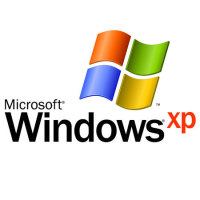For most home users it is very easy to connect to a printer. Older printers are usually connected to the parallel port, while the new printers are connected to the USB port. Once the printer is connected and drivers loaded you can easily select the printer from the list and begin printing.
For those on a network that have printers you can use, you have to take different steps to connect to the printers. While the steps to connect to a network printer are different than connecting to a local print, they aren’t complex and can be performed very easily.
Network Printers
Unlike local printers, network printers are usually connected to a server somewhere on the network. Connecting printers in this manner allows many people to use the printers very easily without having to disconnect and reconnect the printer.
Any printer can be connected to the network, even printers used at home. Describing how to do that is beyond the scope of this post, but I’ll look into writing one in the future. To connect to a network printer you would need the name of the server connected to the printer, and the name of the printer. Once you have those two pieces of information you can connect to the printer.
Connecting to a Network Printer
To connect to a network printer, simply do the following:
- Click Start->Settings->Printers and Faxes. This will display a window listing all printers currently setup on your computer.
- Click the Add a printer icon to start the Add Printer Wizard.
- On the first screen, click the Next button.
- On the Local or Network Printer screen, select the A network printer, or a printer attached to another computer) option, and then click Next.
- Since you know the server and printer name (hopefully), select the Connect to this printer (or to browser for a printer, select his option and click Next option.
- Enter the server and printer name in the format: \\[server name]\[printer name]. For example, if your server name is printserv and your printer name is laserprinter, then the path would be \\printserv\laserprinter.
- Once you enter the name, click Next to continue.
- When a connection to the printer is established, and you have other printers currently installed, you will be prompted to set the new printer as the default printer. This means that when you click the print button in an application, this printer will be the one automatically selected first.
- Select Yes to make the new printer the default, or No to keep the current default printer. When done, click Next to continue.
- A summary of the newly added printer appears. When you are finished reading the information, click Finish to continue.
You have successfully installed a new network printer to your computer.
